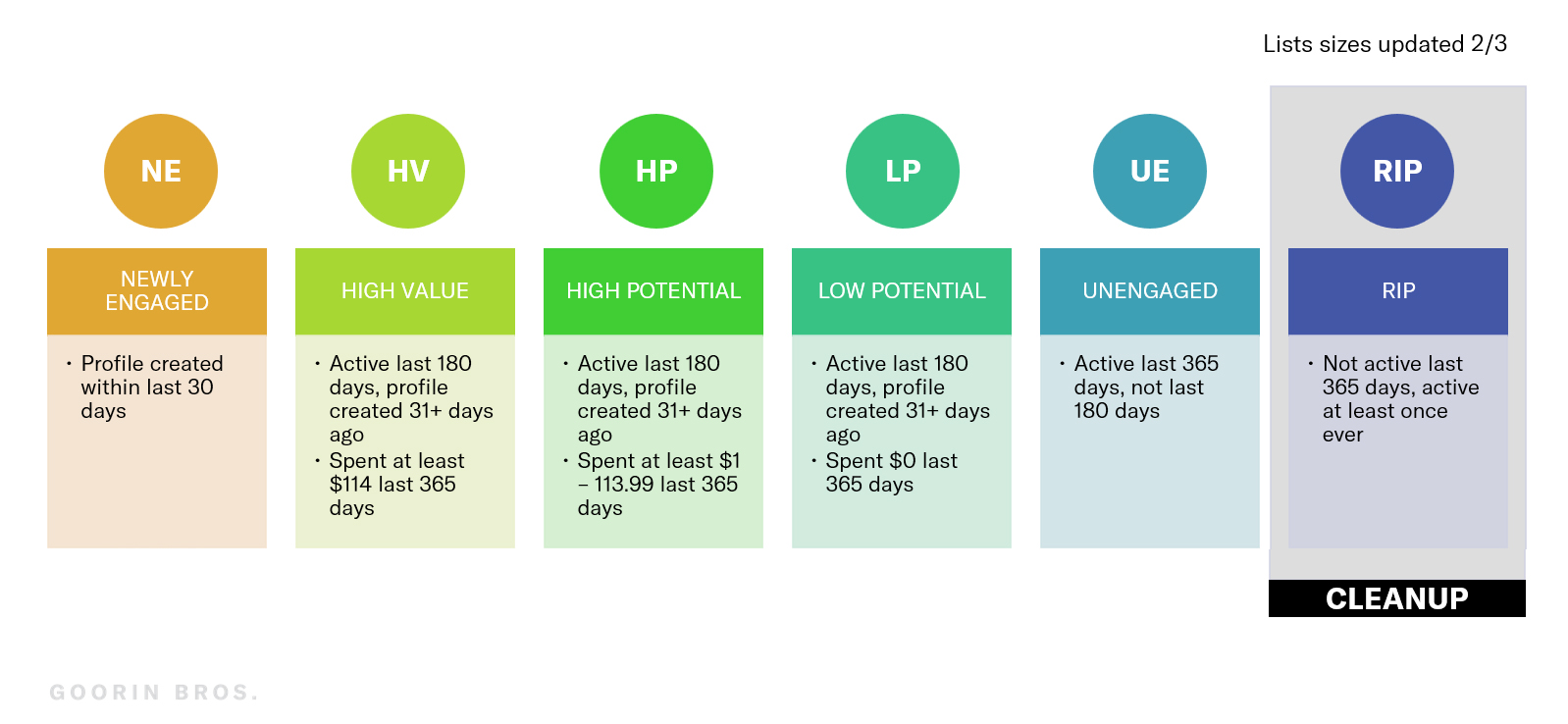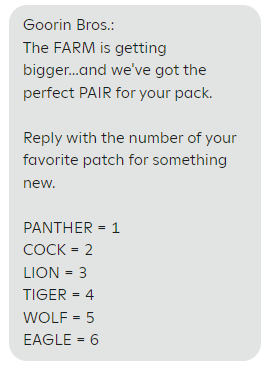Segmentation
The goal: Group our audience into cohorts with the intention to better understand and predict their behavior so we may increase loyalty.
The strategy:
Segment building: I decided to create 6 segments: Newly Engaged, High Value, High Potential, Low Potential, Unengaged, and a final group for list cleanup.
Looking at average spend per customer in the last year, I used that as a divider between high and low potential customers. I then used 6 months as a base for engagement. Engagement here meaning any activity from viewed a product, clicked an email, made a purchase, etc. I chose 6 months because I felt it gave me the best distribution among the segments and it also aligns with the average time between orders.
From there I did a deep dive into each segment. What products were they purchasing? How often? What channels are they subscribed to? Where do they live? Etc.
Use: The "Phase 1" plan was to use these segments when targeting communications. For example, High Value and High Potential segments would receive more communications than Low Potential, depending on the topic of course, as well as different messaging. (See last 2 images). I also performed tests to see what the ROI would be in trying to re-engage the Unengaged.
The results: There was still a lot to learn (and gather!) about customers and potential customers. These segments acted as a starting point to measure campaign—and overall brand—performance.
While I didn't get to see the next phase through, implementing this send strategy in 2022 contributed to a stellar year:
SMS
- ROI increased 45% YOY
- Spend decreased by 16%
- Opt-out rate decreased by 12%
- Attributable revenue increased 48.7%
- Opt-out rate decreased by 34%
The "Phase 2" goal was to set up lifecycle programs such as We Miss You and Thought You Might Like to move customers into the higher value segments.
The idea is the segments will evolve over time, but this established a baseline to track how profiles moved between the segments.
Goorin Bros.



